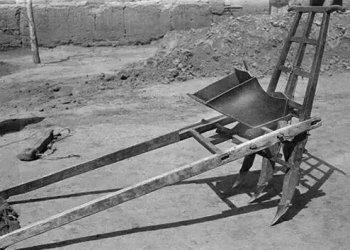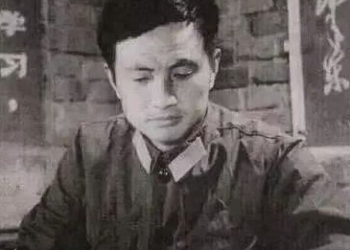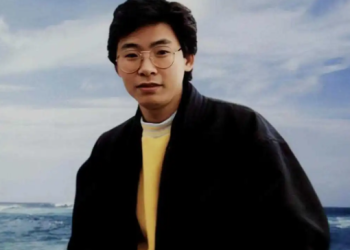Zhan Tianyou studied abroad in the United States at the age of 12. In 1878, he was admitted to the Department of Civil Engineering at Yale University, majoring in railway engineering. He was an expert in modern Chinese railway engineering and is acclaimed as China’s first chief railway engineer. He was responsible for the construction of projects such as the Beijing-Zhangjiakou Railway, and is known as the “Father of Chinese Railways” and the “Father of Modern Chinese Engineering.”
From 1905 to 1909, he directed the construction of China’s first independently designed and built railway—the Beijing-Zhangjiakou Railway. He introduced the “shaft sinking method” and the “zigzag railway” design, which astonished both China and foreign countries.
After graduating from university, Zhan Tianyou intended to pursue postgraduate studies. However, an order was issued at that time requiring all Chinese students studying in the United States to return to China.
It is often said that marriage is often a turning point in a man’s life.

In the second year of his marriage, a former classmate from his studies in the United States wrote to Zhan Tianyou, saying: The railway of the Kaiping Mining Bureau has already reached Tianjin, and plans are underway to expand its scale and establish a railway company. There is an urgent need for railway talent, and I have recommended you to the company. Come quickly to start work. Zhan Tianyou thought to himself that returning to China would be the perfect opportunity to fully showcase his abilities and help his homeland enter the railway era.
However, upon returning to China, he discovered that trains and railways were relatively unfamiliar and not widely accepted novelties at the time.
Both gentry and common people believed that this thing would damage the soil, disturb ancestral graves, and affect crops… There was strong resistance.
The imperial court had not yet experienced the benefits of railways and was also concerned about public sentiment, so it did not support railway construction either.
With no opportunity to apply his professional expertise, Zhan Tianyou complied with arrangements and went to the Fuzhou Naval Academy, where he switched to studying naval engineering. Gold shines wherever it goes.
Zhan Tianyou had a solid foundation in mathematics and science knowledge. He quickly graduated and became an outstanding naval officer. A few years later, he found an opportunity to transfer back to his hometown in Guangdong, where he served as an instructor at the Guangdong Naval Academy and formally held his wedding ceremony with Tan Juzhen.
It is often said that marriage is often a turning point in a man’s life.
In the second year of his marriage, a former classmate from his studies in the United States wrote to Zhan Tianyou, saying: “The railway of the Kaiping Mining Bureau has already been extended to Tianjin. Plans are underway to expand its scale and establish a railway company. There is an urgent need for railway talent, and I have recommended you to the company. Come quickly to start work.” Zhan Tianyou thought to himself that returning to China would be the perfect opportunity to fully showcase his abilities and help his homeland enter the railway era.

At that time, Zhan Tianyou was doing quite well at the Naval Academy, had just gotten married, and was enjoying a comfortable and satisfying life.
But his dream of working in railways had never faded. Without hesitation, he immediately resigned and went home to discuss it with his wife.
Tan Juzhen promptly decided to accompany her husband to the north.
From then on, this Guangdong couple began a life of moving from place to place, relying on and supporting each other through thick and thin.
After arriving in Tianjin, the first project Zhan Tianyou undertook was the construction of the railway from Tianjin to Shanhaiguan.
This railway was China’s first trunk line. After five years of work, only one critical section remained unresolved, preventing the entire line from opening to traffic. That critical section was the Luanhe River Bridge. The Luanhe River was deep and fast-flowing, and the piles driven into the riverbed were quickly washed away.
The British engineer in charge of the construction tried every possible method but could not solve the problem.
This presented the perfect opportunity for Zhan Tianyou to emerge onto the scene!
After repeated surveys and calculations, Zhan Tianyou came up with a brilliant solution: fabricate a bottomless steel caisson, sink it into the water, and then use air valves to compress air into the caisson. When the air pressure reached a certain intensity, the water at the bottom of the caisson would be forced out by the air. This way, the caisson could settle steadily on the riverbed unaffected by the water flow. Workers could then enter the caisson to drive piles and construct the bridge piers.
The Luanhe River Bridge was finally successfully completed. As a result, Zhan Tianyou gained nationwide fame. After this, Zhan Tianyou participated in the construction of several railways, including the line from Shanhaiguan to beyond, serving as the Assistant Chief Engineer.

By 1902, the 42-year-old Zhan Tianyou finally shed his “assistant” status and presided over the completion of the Xinyi Railway as Chief Engineer. This was the first railway designed and built entirely by the Chinese themselves.
“Wait, that’s not right. Textbooks teach us that the Beijing-Zhangjiakou Railway was the first railway surveyed, designed, and constructed independently by the Chinese.”
That’s because the Xinyi Railway was built specifically for Empress Dowager Cixi to worship at the Western Qing Tombs. It was used infrequently and soon fell into disuse, which is why the Beijing-Zhangjiakou Railway took the title of “the first.”
The completion of the Beijing-Zhangjiakou Railway demonstrated China’s capability to construct challenging railway projects, sparking nationwide enthusiasm for railway construction.
In his drive to accelerate the establishment of China’s trunk railway network, Zhan Tianyou simultaneously took on responsibilities for four major trunk railways.
Each of these projects held exceptionally significant importance.
In the following decade, numerous commercial railway companies were established across the country. Zhan Tianyou was invited to serve as a consultant or chief engineer, planning and constructing railways such as Tianjin-Pukou, Zhangjiakou-Suiyuan, Shanghai-Jiading, Luoyang-Tongguan, and Guangzhou-Hankou. With the collapse of the Qing Dynasty, and under the support and guidance of Sun Yat-sen’s philosophy of “saving the nation through industrialization,” Zhan Tianyou took on the role of chief engineer for China’s two most important railway projects—one spanning north-south and the other east-west. He moved his entire family to Wuhan, the junction of these two major trunk lines, and devoted himself entirely to China’s railway construction. Throughout his life, he fulfilled the vow he had once made: “To contribute all one has learned and all one knows, so that the nation may prosper, remain free from foreign aggression, and stand firmly on this earth.”











